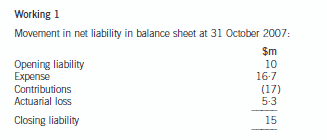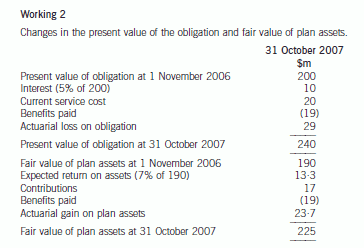速了解!ACCA和CPA相比有哪些令人羡慕的优势?
发布时间:2020-08-16
ACCA和CPA相信小伙伴们都有所了解,那么ACCA和CPA相比有哪些令人羡慕的优势?小伙伴们想知道吗?下面51题库考试学习网就带领大家一起来了解看看,感兴趣的小伙伴赶紧来围观吧。
一、提升国际视野
随着全球经济的一体化进程加快,跨国业务的增长,统一的国际会计准则越来越多的被需要。这样的局势让更多企业认识到,一个可以通晓掌握国际会计准则的复合型“国际注册会计师”人才是多么重要。而ACCA正是建立在以国际会计准则为基础的国际性考试,它在全球180个国家通行,全球大型知名企业,尤其是很多500强企业,例如四大会计师事务所、西门子、飞利浦、
拜耳、IMI、壳牌(中国)、通用、华为、联想、海尔、
神州数码、中国移动等企业都会认可并优先录取ACCA持证会员。相比之下,ACCA的国际知名度刚好弥补了CPA国际地位中的不足。
二、培养复合型高级管理人才
注册会计师(CICPA)是执业注册会计师,它的目标在于培养会计和审计的专业技术人才。而ACCA培养的是复合型高级管理人才,而非记账员。
三、国际认可程度更高
ACCA国际认可程度高,与全球19个会计师组织有互免互认协议。而CPA国际认可程度低。仅与HKICPA,ICAEW有互免协议。
四、具有完善的课程知识体系
CPA考试是“6+1”模式:包括专业阶段和综合阶段。其中专业阶段有6门科目:经济法、税法、财务成本管理、会计、审计、公司战略与风险管理,综合阶段只有1门。CPA考试每科通过率25%左右。
而ACCA是一套完整的会计管理知识体系,包括了财务呈报体系、审体系、财务管理、法律系和税收体系在内的十多门课程,这些课程分布在三个阶段,层层递进、逐渐深入,涵盖了本科财务教学的所有科目和硕士研究生教学的部分科目。而且从零开始,同样适合没有会计专业基础的人报考。
五、更多入职跨国公司担任高级财务管理职位的机会
对于大部分拿到了CPA证书的人来讲,他们可以在国内轻松地做好审计相关工作,但考过了ACCA你可以更好入职各大跨国公司胜任各种高级财务管理职位。根据ACCA官方数据来看,大部分ACCA会员都能在(四大)审计/会计师事务所、金融机构和财政、税务部门从事财务、审计和财务管理工作,很多会员在世界各地大公司担任高级职位。
当然了,对于一部分学有余力的同学来讲,光有一本证书或许还不够。这里建议这部分同学可以先考完CPA再考ACCA。由于ACCA与国内的注会有着9科免考的互认协议,凡通过CPA综合考试,即可凭借成绩单申请ACCA前九科目的免考,仅需要再加考四科就可成为国内+国际综合型的高端会计精英。
以上是本次51题库考试学习网带给大家的全部内容,欲了解更多关于ACCA考试的资讯,敬请关注51题库考试学习网!
下面小编为大家准备了 ACCA考试 的相关考题,供大家学习参考。
(b) (i) Discusses the principles involved in accounting for claims made under the above warranty provision.
(6 marks)
(ii) Shows the accounting treatment for the above warranty provision under IAS37 ‘Provisions, Contingent
Liabilities and Contingent Assets’ for the year ended 31 October 2007. (3 marks)
Appropriateness of the format and presentation of the report and communication of advice. (2 marks)
(b) Provisions – IAS37
An entity must recognise a provision under IAS37 if, and only if:
(a) a present obligation (legal or constructive) has arisen as a result of a past event (the obligating event)
(b) it is probable (‘more likely than not’), that an outflow of resources embodying economic benefits will be required to settle
the obligation
(c) the amount can be estimated reliably
An obligating event is an event that creates a legal or constructive obligation and, therefore, results in an enterprise having
no realistic alternative but to settle the obligation. A constructive obligation arises if past practice creates a valid expectation
on the part of a third party. If it is more likely than not that no present obligation exists, the enterprise should disclose a
contingent liability, unless the possibility of an outflow of resources is remote.
The amount recognised as a provision should be the best estimate of the expenditure required to settle the present obligation
at the balance sheet date, that is, the amount that an enterprise would rationally pay to settle the obligation at the balance
sheet date or to transfer it to a third party. This means provisions for large populations of events such as warranties, are
measured at a probability weighted expected value. In reaching its best estimate, the entity should take into account the risks
and uncertainties that surround the underlying events.
Expected cash outflows should be discounted to their present values, where the effect of the time value of money is material
using a risk adjusted rate (it should not reflect risks for which future cash flows have been adjusted). If some or all of the
expenditure required to settle a provision is expected to be reimbursed by another party, the reimbursement should be
recognised as a separate asset when, and only when, it is virtually certain that reimbursement will be received if the entity
settles the obligation. The amount recognised should not exceed the amount of the provision. In measuring a provision future
events should be considered. The provision for the warranty claim will be determined by using the expected value method.
The past event which causes the obligation is the initial sale of the product with the warranty given at that time. It would be
appropriate for the company to make a provision for the Year 1 warranty of $280,000 and Year 2 warranty of $350,000,
which represents the best estimate of the obligation (see Appendix 2). Only if the insurance company have validated the
counter claim will Macaljoy be able to recognise the asset and income. Recovery has to be virtually certain. If it is virtually
certain, then Macaljoy may be able to recognise the asset. Generally contingent assets are never recognised, but disclosed
where an inflow of economic benefits is probable.
The company could discount the provision if it was considered that the time value of money was material. The majority of
provisions will reverse in the short term (within two years) and, therefore, the effects of discounting are likely to be immaterial.
In this case, using the risk adjusted rate (IAS37), the provision would be reduced to $269,000 in Year 1 and $323,000 in
Year 2. The company will have to determine whether this is material.
Appendix 1
The accounting for the defined benefit plan is as follows:



(b) Discuss how management’s judgement and the financial reporting infrastructure of a country can have a
significant impact on financial statements prepared under IFRS. (6 marks)
Appropriateness and quality of discussion. (2 marks)
(b) Management judgement may have a greater impact under IFRS than generally was the case under national GAAP. IFRS
utilises fair values extensively. Management have to use their judgement in selecting valuation methods and formulating
assumptions when dealing with such areas as onerous contracts, share-based payments, pensions, intangible assets acquired
in business combinations and impairment of assets. Differences in methods or assumptions can have a major impact on
amounts recognised in financial statements. IAS1 expects companies to disclose the sensitivity of carrying amounts to the
methods, assumptions and estimates underpinning their calculation where there is a significant risk of material adjustment
to their carrying amounts within the next financial year. Often management’s judgement is that there is no ‘significant risk’
and they often fail to disclose the degree of estimation or uncertainty and thus comparability is affected.
In addition to the IFRSs themselves, a sound financial reporting infrastructure is required. This implies effective corporate
governance practices, high quality auditing standards and practices, and an effective enforcement or oversight mechanism.
Therefore, consistency and comparability of IFRS financial statements will also depend on the robust nature of the other
elements of the financial reporting infrastructure.
Many preparers of financial statements will have been trained in national GAAP and may not have been trained in the
principles underlying IFRS and this can lead to unintended inconsistencies when implementing IFRS especially where the
accounting profession does not have a CPD requirement. Additionally where the regulatory system of a country is not well
developed, there may not be sufficient market information to utilise fair value measurements and thus this could lead to
hypothetical markets being created or the use of mathematical modelling which again can lead to inconsistencies because of
lack of experience in those countries of utilising these techniques. This problem applies to other assessments or estimates
relating to such things as actuarial valuations, investment property valuations, impairment testing, etc.
The transition to IFRS can bring significant improvement to the quality of financial performance and improve comparability
worldwide. However, there are issues still remaining which can lead to inconsistency and lack of comparability with those
financial statements.
(b) Discuss the key issues which the statement of cash flows highlights regarding the cash flow of the company.
(10 marks)
(b) Financial statement ratios can provide useful measures of liquidity but an analysis of the information in the cash flow
statement, particularly cash flow generated from operations, can provide specific insights into the liquidity of Warrburt. It is
important to look at the generation of cash and its efficient usage. An entity must generate cash from trading activity in order
to avoid the constant raising of funds from non-trading sources. The ‘quality of the profits’ is a measure of an entity’s ability
to do this. The statement of cash flow shows that the company has generated cash in the period despite sustaining a
significant loss ($92m cash flow but $21m loss). The problem is the fact that the entity will not be able to sustain this level
of cash generation if losses continue.
An important measure of cash flow is the comparison of the cash from operating activity to current liabilities. In the case of
Warrburt, this is $92m as compared to $155m. Thus the cash flow has not covered the current liabilities.
Operating cash flow ($92 million) determines the extent to which Warrburt has generated sufficient funds to repay loans,
maintain operating capability, pay dividends and make new investments without external financing. Operating cash flow
appears to be healthy, partially through the release of cash from working capital. This cash flow has been used to pay
contributions to the pension scheme, pay finance costs and income taxes. These uses of cash generated would be normal for
any entity. However, the release of working capital has also financed in part the investing activities of the entity which includes
the purchase of an associate and property, plant and equipment. The investing activities show a net cash outflow of
$43 million which has been financed partly out of working capital, partly from the sale of PPE and AFS financial assets and
partly out of cash generated from operations which include changes in working capital. It seems also that the issue of share
capital has been utilised to repay the long term borrowings and pay dividends. Also a significant amount of cash has been
raised through selling AFS investments. This may not continue in the future as it will depend on the liquidity of the market.
This action seems to indicate that the long term borrowings have effectively been ‘capitalised’. The main issue raised by the
cash flow statement is the use of working capital to partially finance investing activities. However, the working capital ratio
and liquidity ratios are still quite healthy but these ratios will deteriorate if the trend continues.
声明:本文内容由互联网用户自发贡献自行上传,本网站不拥有所有权,未作人工编辑处理,也不承担相关法律责任。如果您发现有涉嫌版权的内容,欢迎发送邮件至:contact@51tk.com 进行举报,并提供相关证据,工作人员会在5个工作日内联系你,一经查实,本站将立刻删除涉嫌侵权内容。
- 2020-03-15
- 2020-05-14
- 2020-01-10
- 2020-05-20
- 2021-06-30
- 2020-03-25
- 2020-01-10
- 2020-01-10
- 2020-04-23
- 2020-01-10
- 2019-01-05
- 2020-03-07
- 2020-05-12
- 2020-05-05
- 2020-03-21
- 2019-07-20
- 2020-01-31
- 2020-01-10
- 2020-01-10
- 2020-01-10
- 2020-03-07
- 2020-01-10
- 2020-01-10
- 2020-05-05
- 2020-01-10
- 2020-01-10
- 2020-03-20
- 2020-02-02
- 2020-08-16
- 2020-04-25